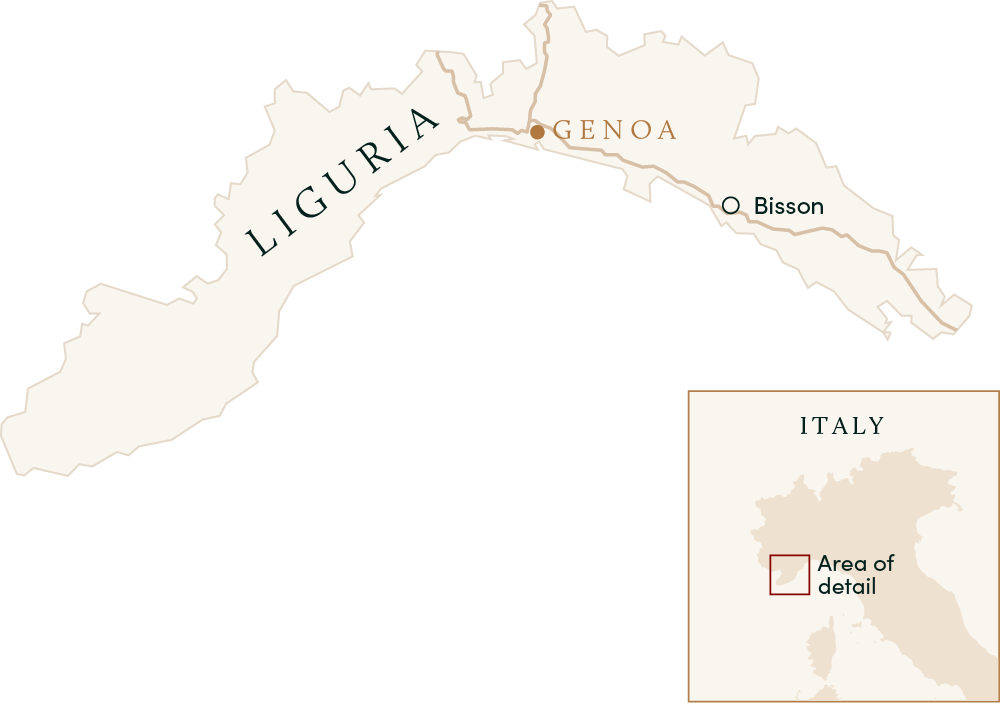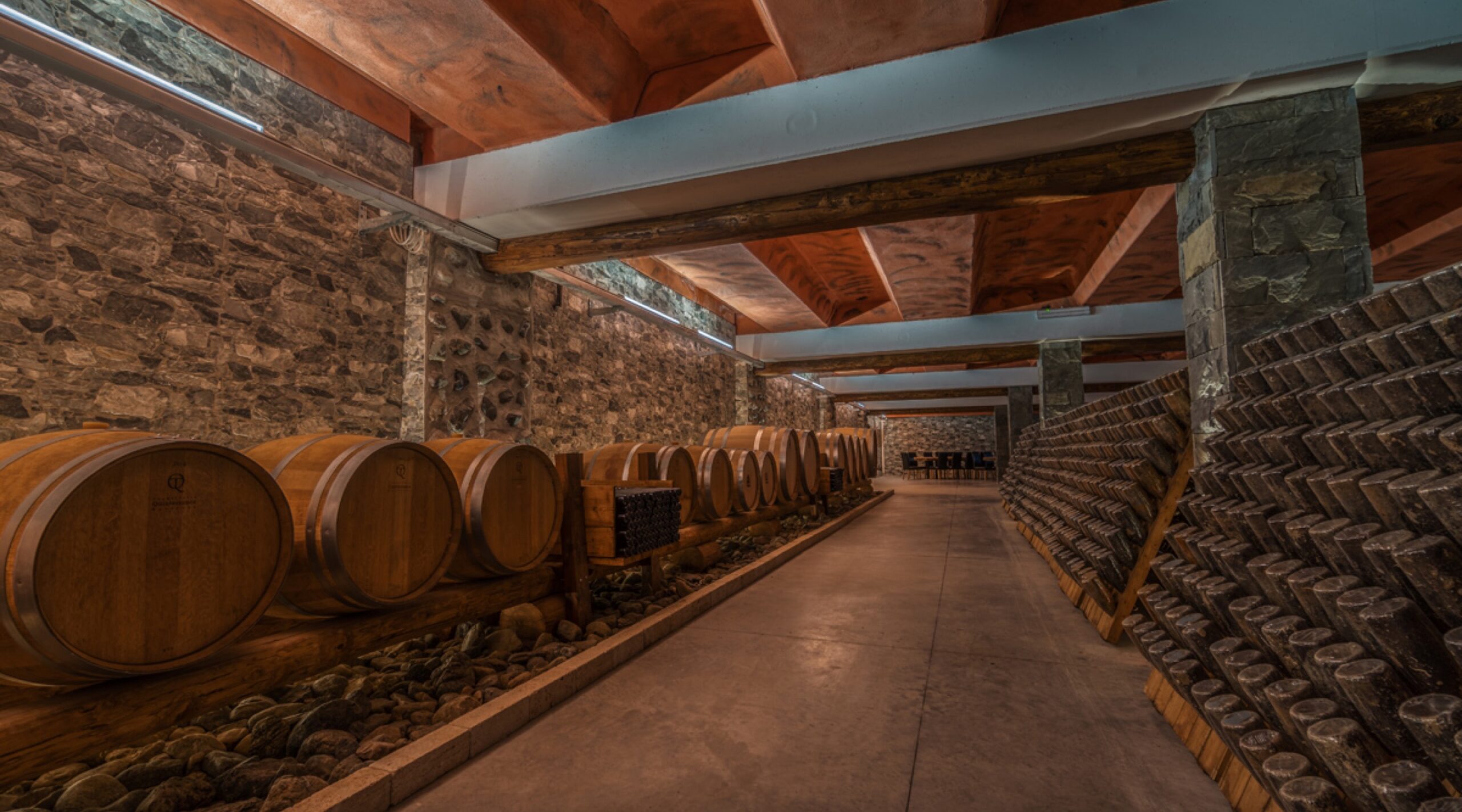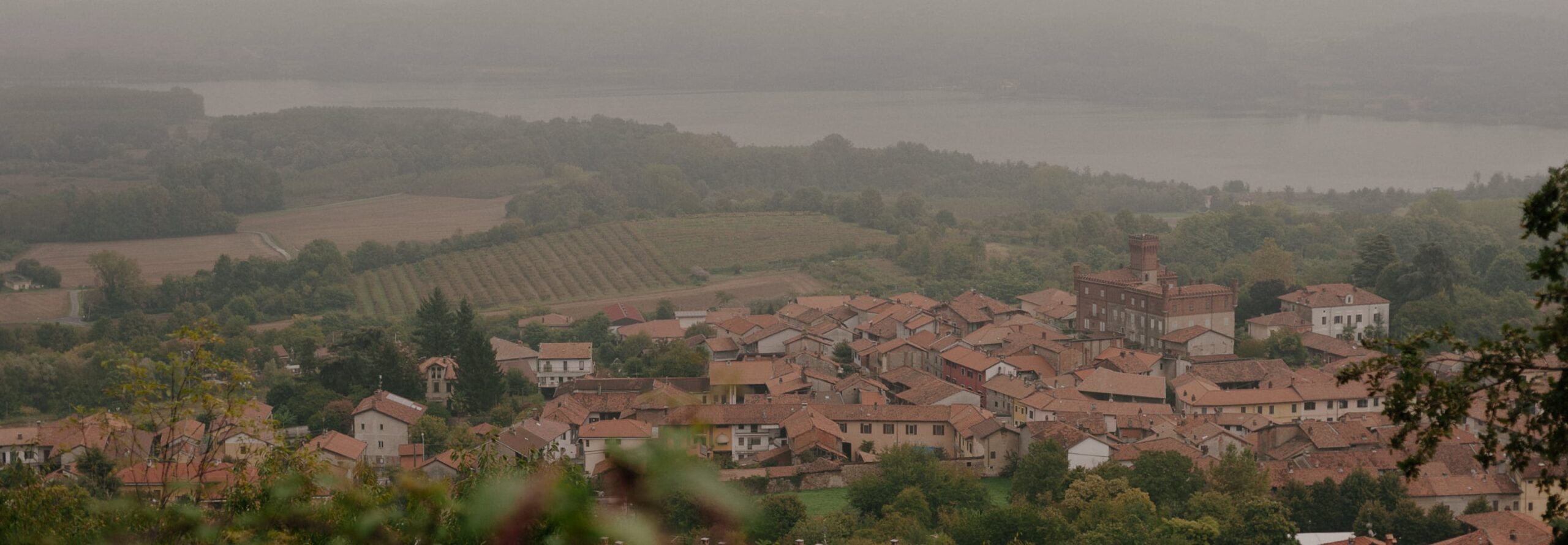Enoteca Bisson was born in 1978 when Pierluigi Lugano fell in love with the wines of the Ligurian coastline. He began as a trader in small lots of bulk wine, later became a wine merchant and finally a grower in his own right. He now splits his time between his busy wine shop in Chiavari, the wine cellar and his vineyards.
For the grapes he purchases, he works hand in hand with local growers from pruning to harvest, then carefully vinifies the different lots of grapes. Lugano is a serious student of oenology and is an expert on the local grape varieties. His passion extends to the preservation of local traditions and this is reflected in the distinctive character and personality of his large range of wines from the Cinque Terre region.
It takes a heroic effort to cultivate vines on the steep slopes of the Ligurian coastline high above the Mediterranean Sea. Mechanization of vineyard tasks is out of the question and everything must be done by hand. Only truly passionate winegrowers are willing to carry on the traditions that have come down through the generations since the ancient Greeks first planted vines on the steep, stony slopes here. Lugano works closely with several small, local growers. He believes, as we do, that wine is made in the vineyards and he closely controls the work done in the field. Further, he has embarked on an ambitious program to purchase his own parcels in prime zones throughout the Cinque Terre and surrounding areas. He staunchly defends indigenous, and increasingly rare, grape varieties and works tirelessly to ensure that they do not disappear for future generations of wine lovers. He is in the forefront of the movement to prove the worthiness of the Bianchetta Genovese, the Alberola and Bosca as well as the scintillating Ciliegiolo.
The small but very well equipped cellar is designed so that each lot of grapes can be vinified individually. With the exception of an occasional experiment with barrel aging, Lugano vinifies his entire range of wines in stainless steel to preserve the essential fruit of each vineyard site and each grape type.
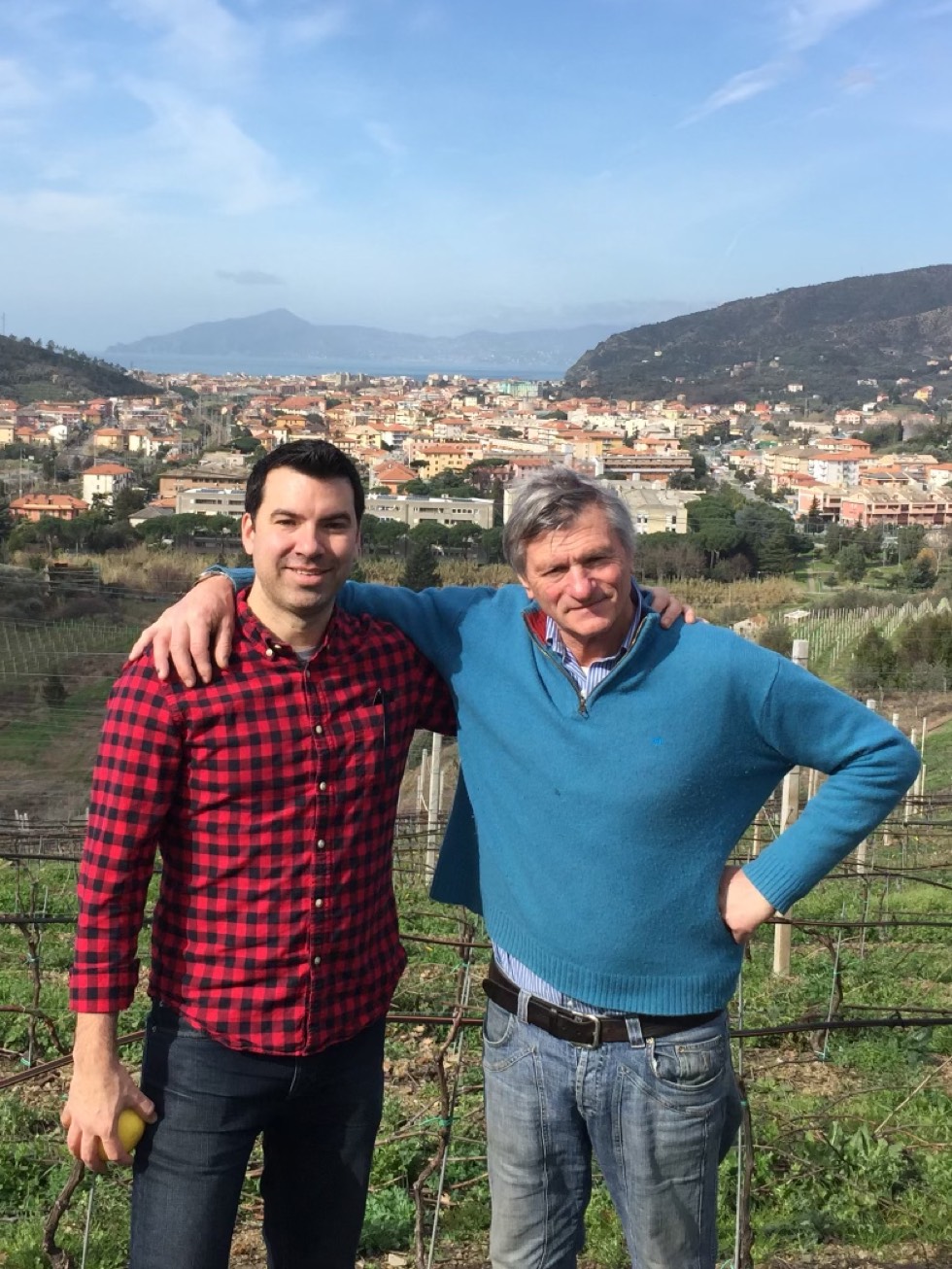
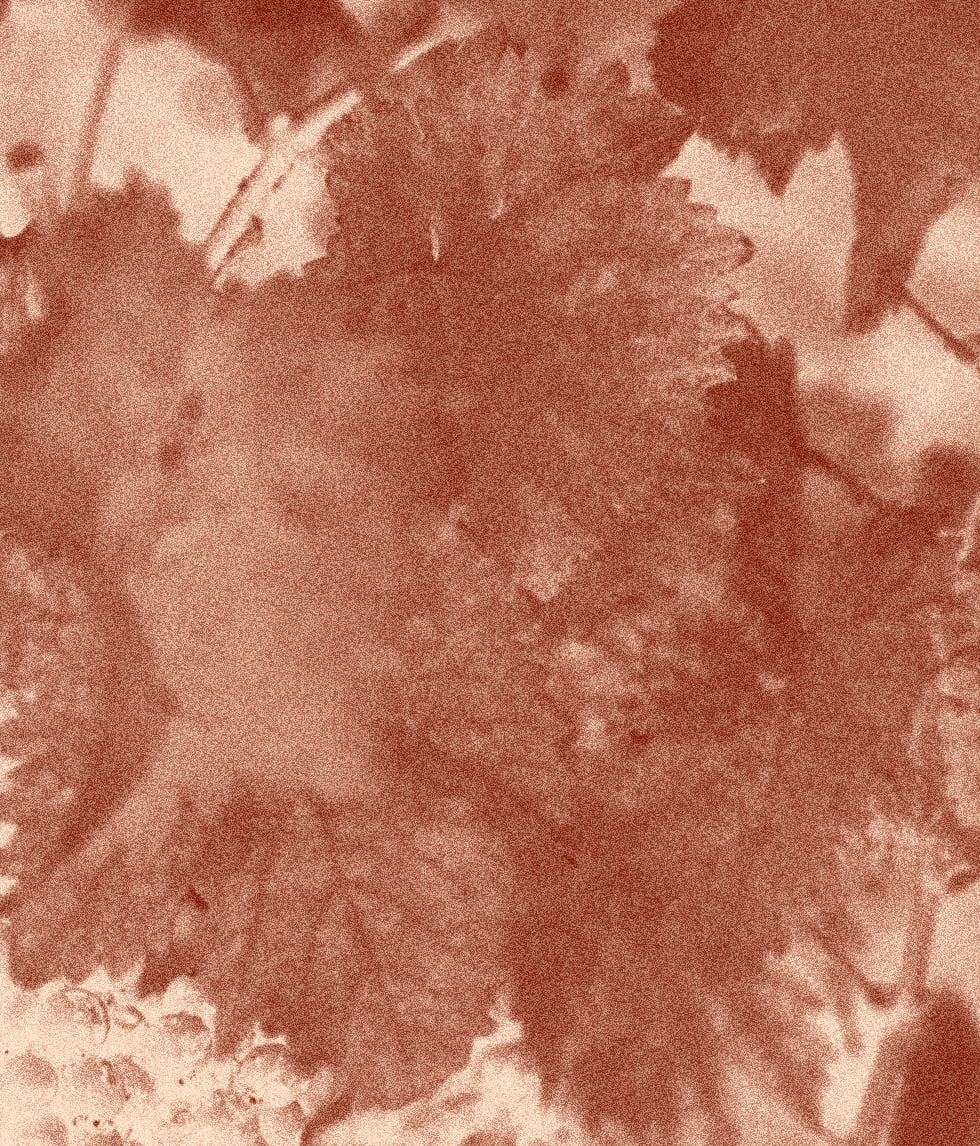
Lugano works closely with several small, local growers. He believes, as we do, that wine is made in the vineyards and he closely controls the work done in the field.
Farming
Lutte Raisonnée pursuant to Italian law 1078, with some biodynamic practices
Treatments
Synthetic treatments only when necessary, otherwise copper and sulfur
Ploughing
Annual ploughing/hoeing to maintain vineyard
Soils
Sandstone-clay and gravel
Vines
Planted at 5,000 vines/ha on steep, terraced vineyards overlooking the Mediterranean.
Yields
Controlled with severe pruning, debudding, and deleafing
Harvest
Entirely manual, in 15 kg crates; usually from late August to the end of September
PURCHASING
Estate fruit and fruit purchased from growers with whom Pierluigi has worked for decades
Fermentation
Wines ferment with selected yeasts in stainless-steel tanks after destemming, 2-3 days of skin contact, and pressing.
Extraction
Wines remain on their lees without bâtonnage.
Chaptalization
None
Pressing
Pneumatic pressing
Malolactic Fermentation
Blocked via sulfur
Élevage
Wines spend 6-8 months in stainless-steel tanks
LEES
Wines remain on their fine lees during élevage
FINING & FILTRATION
Wines are unfined and cross filtered.
SULFUR
Applied after fermentation and at bottling, c. 16 mg/l free sulfur.
